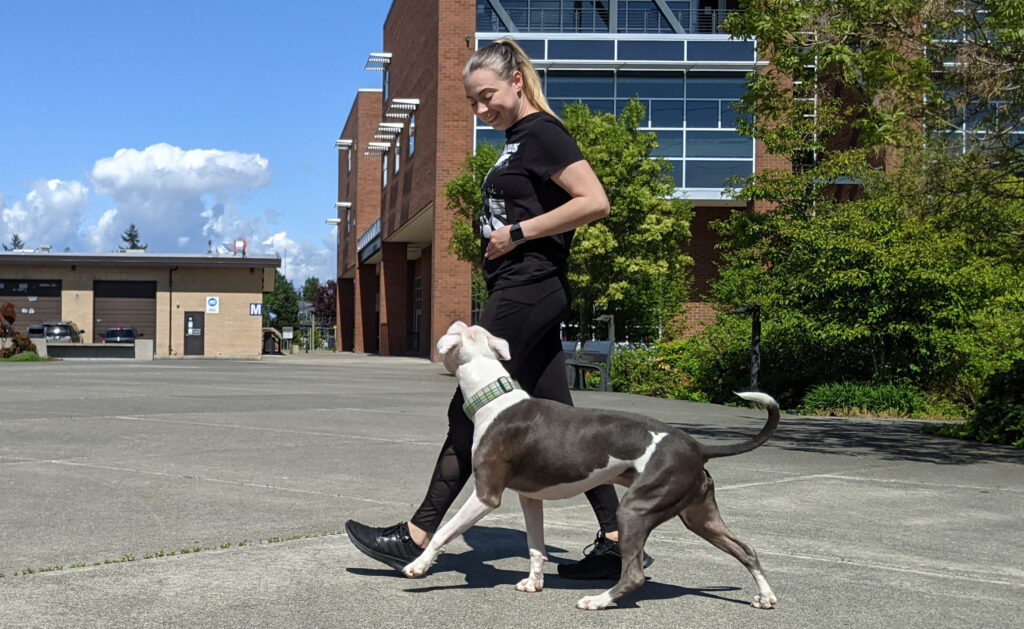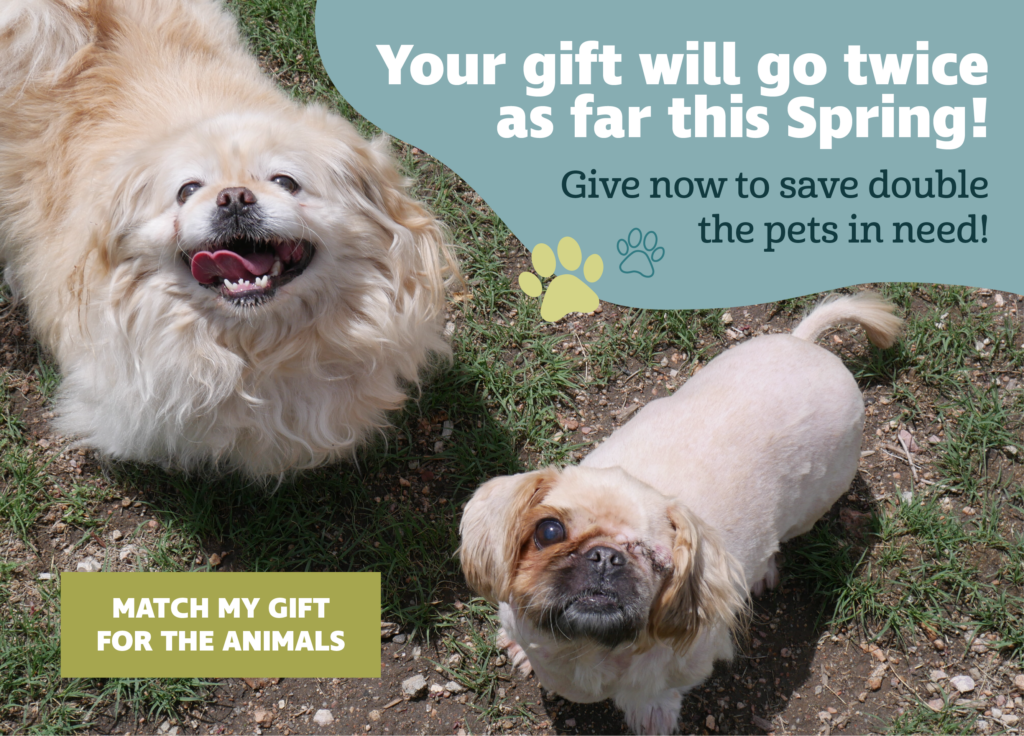
Being aware of dog body language and understanding the reasons behind biting is crucial for preventing incidents and fostering safer interactions between dogs and people. Even the most well-behaved dogs can bite if they feel scared or threatened. We asked our Behavior Supervisor, Amber Todd, to help us better understand dog behavior and how to prevent bites. Here’s what she had to say:
What are the warning signs that a dog may bite?
Dogs communicate discomfort through body language. They may respond with Fight, Flight, or Freeze:
- Fight: The dog stands tall, tense, with raised hackles, a tightly closed mouth or exposed teeth, and may bark or growl.
- Flight: The dog tucks its tail, pulls its ears back, avoids eye contact, pants heavily, and shifts weight away.
- Freeze: The dog stands still or curls up, appears tense, breathes rapidly, avoids eye contact, or displays a whale eye.
Recognizing these signals can help prevent bites.
How can I prevent my dog from biting?
Respect your dog’s boundaries and observe body language. Socialize puppies early, use positive reinforcement training, and always supervise interactions with children or unfamiliar adults. Give your dog choices rather than forcing them into uncomfortable situations.
Why do dogs bite?
Dogs bite when they feel threatened due to fear, anxiety, frustration, or being startled. Overexcited dogs may also nip if they aren’t thinking before reacting.
What should I do if my dog snaps or bites?
Identify what triggered the bite and remove the threat or allow the dog to move away. Avoid grabbing or restraining the dog. If the cause is unclear, consult a certified trainer for help.
What should I do if my dog is in a fight?
Never put your hands between fighting dogs. Instead, try startling them with loud noises, throwing water, or placing a barrier between them. If necessary, use the wheelbarrow method—lifting the hind legs and walking them backward—to separate them safely. Once apart, give them time to calm down.
How can I make my dog more comfortable and less likely to bite?
- Avoid direct eye contact or towering over your dog.
- Allow the dog to initiate contact rather than reaching for them.
- Move slowly and confidently.
- Avoid hugs or patting on the head; instead, scratch the chest or shoulder.
- Give dogs space, especially if they appear tense or cornered.
- Use a calm, friendly tone of voice.
By understanding and respecting canine body language, we can create safer interactions and prevent dog bites, keeping both people and pets happy and secure.










